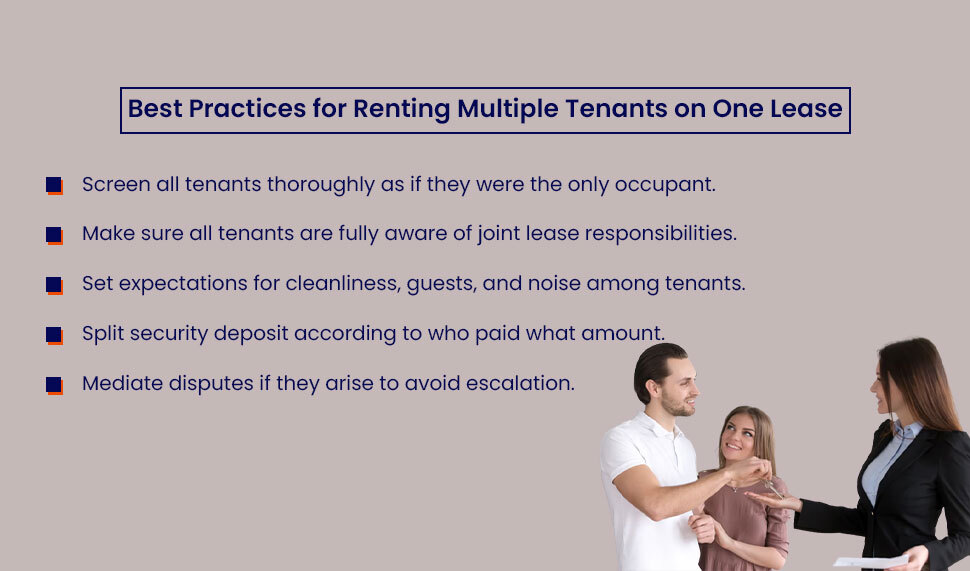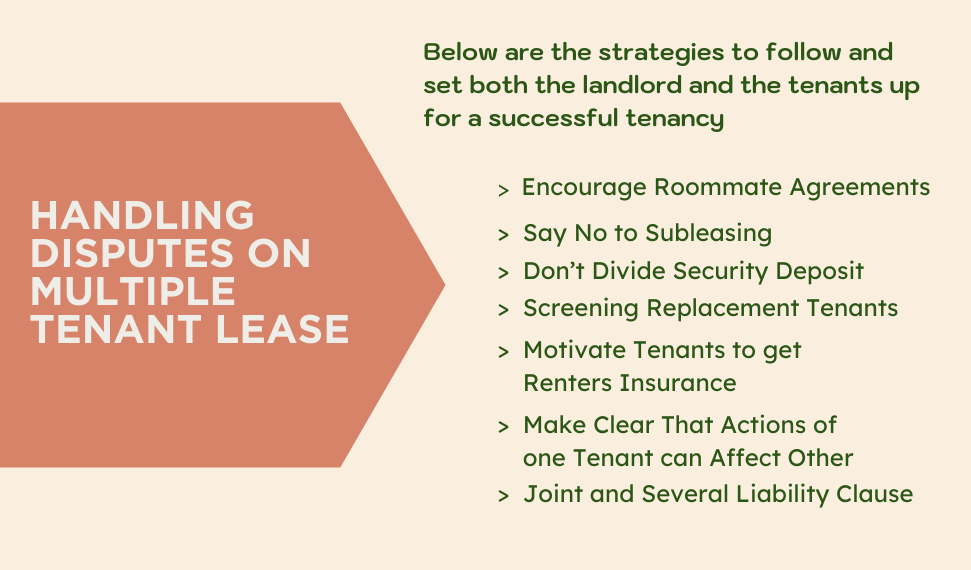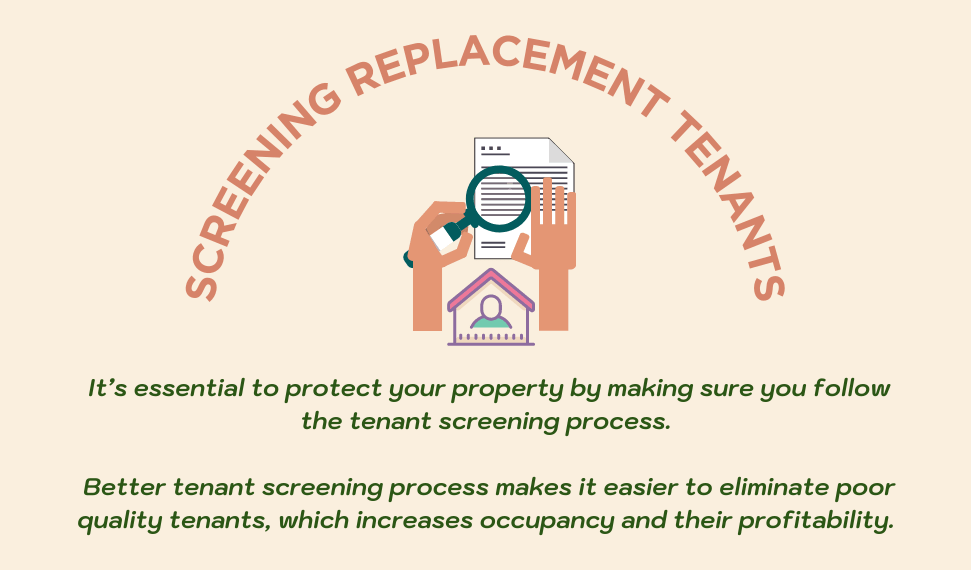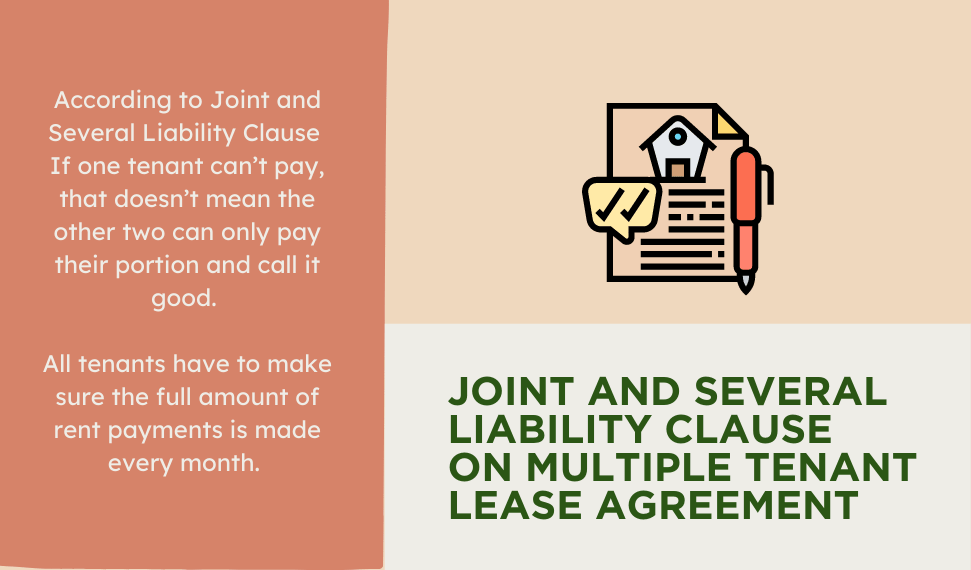

If you own a property, you must be more careful before leasing to multiple tenants. The more tenants share a lease, the more damages occur to other amenities of the rental property. This article gives you proper guidance about leasing property. Here is an ultimate guide to multiple tenant lease agreements. Well, OKC Home Realty Services can help you manage lease agreements.
A multiple tenant lease agreement is a legal contract that governs the rental of a property to multiple tenants. When two or more people sign the same rental agreement, they become co-tenants. As co-tenants, they share equal rights and responsibilities for the property. This means that all tenants under the lease have the same legal rights, an equal say in how the property is used and maintained, and a similar obligation to pay rent and adhere to the terms and conditions of the agreement. The purpose of this agreement is to ensure that all tenants are on the same page and have a clear understanding of their roles and obligations while living together.
These days, renting a single-family home to multiple tenants has increased rapidly, especially in high-living cost areas. The reason behind this is, that staying under the multiple tenant lease agreement helps renters save money. And, for landlords, renting a house to multiple tenants adds up to more income than comparable to a single tenant lease.
When multiple tenants sign a lease agreement, they become co-tenants with identical rights and obligations. Landlords commonly use a multiple-tenant lease agreement when renting to roommates or a tenant needing a co-signer to approve their rental application. Joint and several liability refers to all tenants on a lease being liable for any monetary damage. As a result, each tenant is jointly and individually responsible for paying all rent.
If one tenant fails to pay their share of the monthly rent, each tenant is still independently liable to the landlord for all the rent. Having joint and several liability clauses in the lease agreement ensures that every tenant who signs the lease is responsible for the monthly rent.
The components of a multiple-tenant lease agreement template are the same as traditional lease agreements. Still, additional clauses can be added to protect the landlord if one tenant decides to move out before the lease term expires or wants to sublet their room. However, these clauses must abide by local ordinances to avoid legal issues. To ensure a successful tenancy, landlords should encourage roommates to sign joint and several liability clauses on the lease agreement.
It is also important to remind tenants about the rental agreement they agreed to and advise them to feel comfortable living with each other. Landlords should also maintain frequent communication with their renters.
Leasing a property involves the legal arrangement between a landlord and tenants for the use of the property. The type of lease can vary based on the number of tenants involved. There are two primary types: single-tenant leases and multiple-tenant leases. Each has unique characteristics and considerations that landlords and tenants should know.
| Basis | Single Tenant Lease | Multi Tenant Lease |
| Number of tenants | In a single-tenant lease, one tenant occupies the entire property. | It involves leasing the property to more than one tenant, each occupying separate units or spaces within the same property. |
| Lease Agreements | Only one lease agreement is made between the landlord and a single tenant. | Each renter has an individual lease agreement with the landlord. |
| Responsibility for Property | The tenant has sole control over the property and enjoys the benefits and responsibilities associated with the tenancy. | All tenants are equally responsible for fulfilling the terms and conditions of the lease agreement. |
| Vacancy Impact | If the tenant leaves, the rental units become vacant until a new tenant is found. | There will be other tenants even after one tenant leaves the property. They will continue to occupy the rental units. |
| Potential Conflicts | There is no chance of conflicts as only one tenant lives on the property. | Tenants share common areas and facilities, so conflicts are potentially challenging. |
| Management Complexity | Property management is more uncomplicated for dealing with only one tenant. | Multiple tenants have different needs. It can be more complex for property management. |
| Rental Income | Landlords have to depend on a single tenant’s income. It may not be profitable. | The landlord benefits in multi-tenant leases as he/she receives rental income from multiple tenants—no more dependency on single rental income. |
| Shared Spaces and Expenses | A tenant is solely responsible for all expenses and exclusively uses the entire property. | Expenses are shared among tenants and share common areas and facilities, such as hallways, parking lots, etc. |
Leasing multiple tenants in a single property has both merits and demerits. There are lots of working youth who are just starting their career. In such a case, sharing a single-family rental home can be a good option for these individuals. Also, for landlords, multi-tenant properties lead to multiple tenants paying rent. This points to severe income.
Eventually, Deciding to offer multiple tenant leases depends on your rental property location. If the location is in high demand and has high rental rates, you can go for it. As a landlord, you need to examine the market value and make better decisions.
Both Landlords and tenants have a mutual understanding of the roommate agreements. The agreement should include the signature of all the tenants staying in the joint lease together. Both parties must keep a copy of the joint lease with all the essential documents and original signatures.
Here are the things that need to be included in the Co-tenancy agreement.
| Terms | In Detail |
| Lease | Each co-tenant needs to stick to the terms and conditions mentioned in the lease agreement or local laws. |
| Rent | Each co-tenant agrees to pay their share of the rent. Roommates must be aware that they are Jointly and Severally Liable. |
| House Rules | Co-tenants must agree to all the house rules like; overnight guests, cleanliness, noise, use of equipment, and more. |
| Expenses | Co-tenants need to pay their share of utilities, food, telephone bills, and so on. It is up to tenants how they divide the bills. |
| Damages | If one tenant makes damages to the rental property, all remaining tenants are equally responsible. |
| Security Deposit | Security deposits can not be split. For example, if one tenant is leaving a property, he/she can get his/her share of the security deposit. Everyone gets their share once the lease is vacant. |
| Terminating Tenancy | If one tenant wants to terminate the lease, all other co-tenants need to agree in writing to release the old tenant from this agreement. |
| Replacement Tenant | The new tenant must sign all copies of the agreement before moving to the rental property. For that, every other tenant must agree. |
| Pets | Tenants can keep pets if the landlord allows them. |
Here are 5 do’s and don’ts to consider when drafting or entering into a co-tenancy agreement:

Draft a Written Agreement: Get everything in writing that covers the lease agreement’s critical elements, such as rent distribution, names of involved parties, security deposit, lease duration, and termination terms and conditions. A written agreement provides a legal framework and helps protect everyone’s interests.
Communicate Openly: Maintain open and transparent communication with your co-tenants about your needs and expectations. Regularly discuss any concerns, changes in circumstances, or issues related to the living arrangement. This helps to prevent minor problems from getting into more extensive disputes.
Set Clear Financial Guidelines: Determine how the rent, utilities, and shared expenses will be divided among the co-tenants. You can split everything evenly or allocate costs based on room size or income. Clear guidelines can prevent disputes and ensure fair contributions.
Discuss Privacy and Boundaries: Always set expectations for privacy and personal space. Define the shared and private areas, and establish guidelines for entering each other’s spaces. Respecting each other’s privacy can contribute to a harmonious living arrangement.
Personal Property and Storage: The most important task is to address how private property will be managed within the shared space. Outline rules for storing personal belongings, sharing everyday items, and what happens if someone leaves things behind after moving out.
Overlook Exit Strategies: Discuss exit strategies upfront. Determine how a co-tenant can end the agreement and how new co-tenants might be added. This helps avoid complications when someone wants to leave or join the living arrangement.
Ignoring Legal Considerations: Ignoring local laws and regulations regarding co-tenancy agreements can lead to legal complications. Ensure your agreement aligns with the laws in your area to protect everyone’s rights and interests.
Assume Anything: Never assume everyone is on the same page without explicitly discussing important matters. Assumptions can lead to disagreements and confusion. Always communicate and confirm understanding to prevent misunderstandings.
Skip the Security Deposit:
Never try to ignore the security deposit. Clearly define the amount, purpose, and conditions for its return in the co-tenancy agreement. This helps protect both parties’ interests and ensures accountability.
Ignore Subletting Rules: If your co-tenancy agreement forbids subletting, don’t sublet the property without consent. Violating this rule can lead to legal consequences and tensions among co-tenants.
Many rental property owners love to manage multi-tenant properties as their full-time job. For them, this is a huge benefit and a source of income. For some, this is a career. Investing in multi-tenant properties gives tax benefits exceeding business deductions and depreciation.
Some Benefits include:

Some landlords face trouble from tenants. Some tenants don’t manage to live together in a good manner. Renting a house with roommates whom you have known for a certain period of time can be easier. Issues occur when the tenants are unknown to each other. If you are leasing your property to individuals who are unrelated, this can result in disputes.
The other disadvantage can be, that the higher number of tenants leads to a higher rate of damages and tears to the rental property. Landlords can get more repairs and maintenance calls. Sometimes tenants don’t care about the rental property. Managing multiple renters is a lot more work than you think. The property tenant screening process should be followed in such cases.
Recommended: What needs to be included in Property Management Agreement?
Joint leases can both benefit landlords through more stable income but also introduce potential issues among tenants. Careful tenant selection and setting clear ground rules can help maximize the upside while minimizing problems.

When one tenant breaks a co-tenancy agreement, it can have various consequences depending on the situation and the contract terms. In general, co-tenants are equally responsible for joint liabilities, such as property taxes or a mortgage, for which each co-tenant is responsible. If one co-tenant fails to pay their share of the rent, they are still independently liable to the landlord for all the rent.
If a co-tenant wants to leave before the end of the lease period, they must notify the landlord and get their permission. In the case of a tenant breaking a lease, they may face penalties, fines, and other consequences, depending on the reason for breaking the lease and the laws of the state where the property is located. Some valid reasons for breaking a lease include the rental unit being uninhabitable or violating safety or health codes, starting active military duty, the landlord violating privacy or harassing the tenant, and having an early termination clause in the lease agreement.
Tenants may also try to negotiate with their landlords to see if they can develop a mutual termination agreement. Co-tenants have certain rights and responsibilities in the rental property, regardless of their financial contributions to the rent payment. Co-tenants have the right to occupy and use the property without interference from other tenants, except in cases where the lease agreement provides otherwise. Co-tenants also have the right to make improvements to the co-owned property, but they may only be held responsible for their share of the progress cost if necessary and beneficial to the property.
If you have decided to invest in multiple tenant leases, be prepared to handle the disputes too. Here are some essential guidelines you should follow when leasing to more than one renter single property. This makes the process smoother for you and the tenants.
Below are the strategies to follow and set both the landlord and the tenants up for a successful tenancy.

Landlords need to motivate their tenants to come up with a mutual agreement. Simply, a roommate agreement is a document signed by all tenants living in a single property. The document includes essential clauses, rules, and expectations that every tenant should meet.
For example, every tenant gives time for cleaning and safety, food will be shared, bills will be split and paid, and so on.
The roommate agreement is a personal agreement between tenants and the landlord and does not settle disputes. If any issues arise, they can address the problems and come up with a decision with the help of the agreement they signed before renting.
We have listed a few issues that can create trouble in the near future.
It is actually the landlord’s personal choice to allow or deny subleasing. Just make sure, each tenant is liable for meeting the terms and conditions of the lease. It’s just that, refusing to sublease your rental property will keep you away from the problems and make things easier in the long run.
Due to some reasons, sometimes, tenants want to move out of the rental property. In such a case, they want to sublease their apartment which can keep landlords in trouble.
As a subleaser aren’t directly involved in the co-tenancy agreement. They are not jointly and severally liable for the rent or other responsibilities stated in the rental agreement. It can get complicated if the sublease doesn’t pay rent on time or refuses to pay one. You can not take legal action as they aren’t directly linked to the roommate agreements.

Don’t make any limitations regarding screening tenants regarding income and credit requirements, background checks, or other requirements. It’s essential to protect your property by making sure you follow the tenant screening process.
When the original roommates were excellent tenants, a landlord will add a replacement tenant to the lease without question. This can cause you problems. So it would be good if you consider screening replacement tenants.
Go through the rental application before calling for an interview. This can save you valuable time. Take the help of the property manager. That is what they are for – making your job easier.
The security deposit will not be divided and the landlord should mention this before leasing a rental property to the renters.
Let me make this clear with an example. If the lease is 24 months and one of the roommates decides to end the lease and the other stays, the deposits can’t be returned to the roommate who is leaving the property. That means the security deposit can be back once the rental property is completely vacant. It is up to tenants to come up with the solution and not to create any issues. Landlords aren’t involved in this.
There are other things to keep in mind. I already mentioned above that the deposits are back at the end of a tenancy. Adding to it, landlords can deduct from the security deposit any kind of damage to the property.
Let’s assume, that 3 roommates paid security deposits of $300, each one contributing $100. When the rental home is vacated and the damage is evaluated, you discover that there is $100 worth of damage, and you can only return $200. You need to make sure the tenants know it will be returned in one check. It is up to renters to decide how to divide it amongst themselves.
Before signing a lease, tenants should be fully aware of their actions. Property owners must let them know that one’s actions can affect the other tenants in the rental unit. A landlord can terminate the lease agreements for all the roommates if one tenant violates part of the lease.
That means the action of one tenant can bring difficult situations to all the roommates. So, As a landlord, before you face a group of unfriendly roommates;

The clause “joint and several liabilities” refers to everyone who signs the multiple tenant lease agreement. The tenants are responsible for rent payments. If one roommate can’t pay, that doesn’t mean the other tenant can only just pay their share and call it good. According to the lease terms, all tenants have to make sure the full amount of rent is paid every month.
Hiring a property manager can make your job easy. Property Management OKC offers rental management services and works on essential documents.
It is necessary to have renters insurance, as no one knows who might leave the door open, or if any accidents will occur. Tenants must know that their insurance is not covered by the owner’s Insurance. Tenants need to get the insurance on their own.
Encouraging tenants to get renters insurance can protect them from unexpected damages that occur on the rental property.
Renters insurance in Oklahoma can help you repair your property for the damages that unexpectedly occur. Renter Insurance provides coverage for an accident at your rental unit.
Fill up the mentioned form or call OKC Home Realty Services today for a free consultation.
A lease with multiple tenants makes them jointly and severally liable. So, you should only collect rent one way and one time when it is due. Also, the roommate’s agreement includes all necessary clause that establish clear guidelines, minimize potential conflicts and addresses division of responsibilities, utility payments, and rules for subletting or guest stays.
It informs that all the tenants who agreed for ‘jointly and severally liable’ should pay the rent on time and if one tenant can’t pay, that doesn’t mean the other can only just pay their portion and call it good. After the lease is signed, all tenants are equally responsible for the full amount of rent payments.
If one of the roommates leaves the tenancy the other tenants may end up paying the missing rent if both of them had agreed for ‘jointly and severally liable.
If one co-tenant wants to leave a joint lease, they can end their own tenancy under a periodic agreement by giving a 21- day termination notice to the landlord and remaining tenants. After vacating the rental property as per their notice, they are no longer under the agreement.
Tenants can break the lease agreement early for valid reasons, you just need to inform the landlord sooner. Some of them are:
If a tenant loses a job or transfers a job out of that place.
If a landlord violates the safety rules or harasses the tenant.
If a tenant has a military duty.
When two or more people sign the same rental agreement, they are co-tenants sharing the same legal rights and responsibilities. And, one co-tenants negative behavior can affect everyone’s tenancy.
Yes, a landlord can have two leases on the same property, as long as both leases do not conflict with each other and comply with local rental laws and regulations.